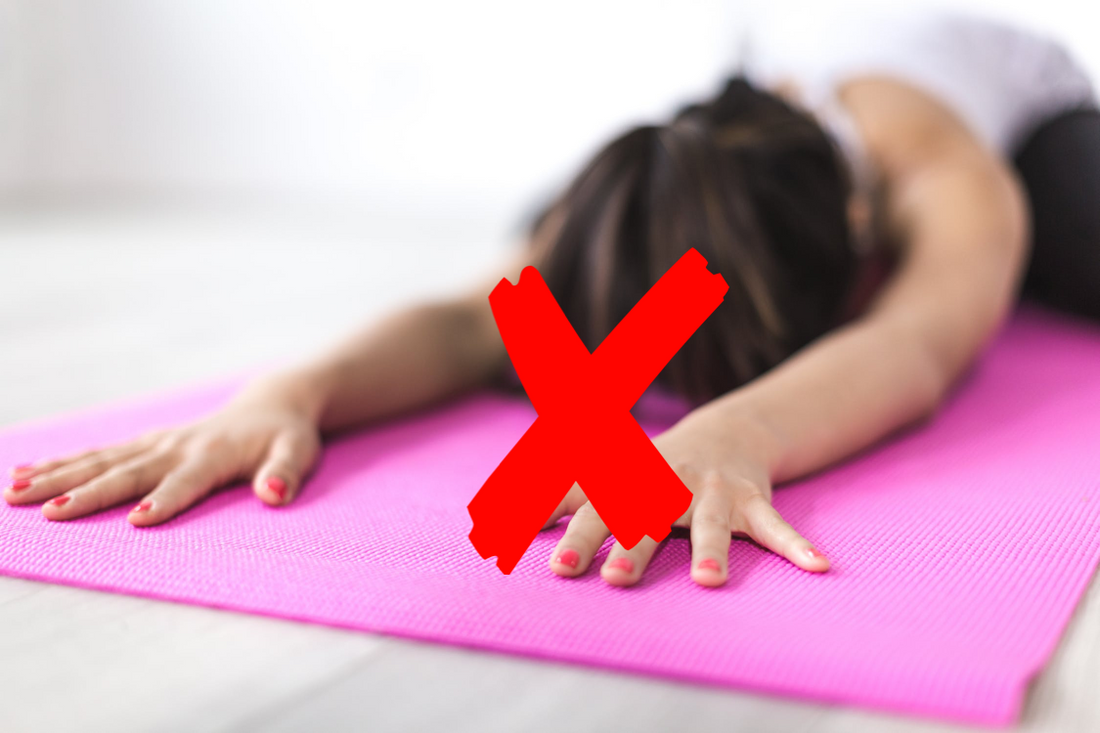The majority of the worlds yoga mats are made from mass-produced throw-away plastics like PVC - polyvinyl chloride. They're cheap and easy to come by, but are they compatible with the ethos and demands of yoga?

The ethos of yoga is not to harm the self or others; so it seems ironic to have a plastic or PVC yoga mat that is non-renewable, uses finite resources, and ultimately makes its way into the ocean or landfills, doesn’t it?
PVC and the Planet
PVC or polyvinyl chloride is a common material used for most yoga mats. PVC is made from reacting chlorine, carbon, and ethylene (a product of petrol) together. Later, phthalates are added to the mix to make it soft and malleable.
Manufacturing PVC requires a heavy production process to extract the base materials and react the chemicals together. This is all highly reliant on the use of fossil fuels.

How Many Practices can PVC Provide?
So now we have the finished product of our cheap but cheerful yoga mat, but how reliable can we say it is? Soon after purchase we might start to notice a lot of wear and tear on our PVC mat. Will we still have it this time next year? Or even after six months of use? Usually the answer is no.
A PVC mat is a cheaper option but in the long-run, how many times does an average yogi purchase an average quality mat? As with all purchases, it’s better to buy great quality once, than poor quality multiple times.

Where Does Plastic End Up?
Once we’ve finished practicing on a PVC mat what can we do with it?
The options for reuse or recycle are limited. You could get creative and find a new use for an old mat but realistically most PVC products end up contributing to the overwhelming problem of plastic waste in our oceans, or in a landfill.
To recycle PVC yoga mats requires further heavy and chemical processing only to transform the mat into another PVC product.
A PVC yoga mat will take hundreds of years to decompose…..years! This means we’ll be living with the consequences of a PVC purchase long after the last time we’ve chanted OM on it.
What are the Common Performance issues with PVC Yoga Mats?

The Ends Rolls Up
Plastic yoga mats are prone to stretching and malforming and the ends often roll up, making it hard to keep the mat flat.
Slippery When Wet
When you dripping with sweat and focusing on that downward-facing dog the last thing you want is to have slipping toes and trembling fingers.
They Don't Offer Much Padding
Not only is a slippery plastic surface uncomfortable its down-right dangerous and can results in strained ligaments, bruises and a frustrating experience that limits your yoga experience.Plastic mats are thin, and provide poor support for your joints.
What is the Alternative to a PVC Yoga Mat?

This all seems very doom and gloom but luckily there are many great alternatives to a PVC yoga mat which are ultimately better for the planet, pocket, and personal health.
Many practitioners of yoga begin to take yoga off of the mat and into their everyday lives as they get further along on their yoga journey. One of the best ways to take yoga off the mat is to start with a sustainable mat!
From cork to cotton to natural rubber there are plenty of natural, biodegradable, and sustainable mat materials to choose from.
Why Cork Mats Make the Best Eco-Friendly Mat
Cork mats make an excellent choice as a mat which will not negatively harm your health or our environment.
Cork can be harvested from the cork oak tree without harming or damaging the tree at all. Not only does the tree remain, but as the bark grows back; it absorbs three times more carbon dioxide!
Cork mats are 100% natural, fully biodegradable, and sustainably sourced. With natural antimicrobial properties that make cork order resistant, and a texture that gives better grip when wet from, stylish and aesthetically pleasing designs; cork mats are the best choice for eco-conscious yogis.

Don't settle for plastic. You deserve the best from yoga.


